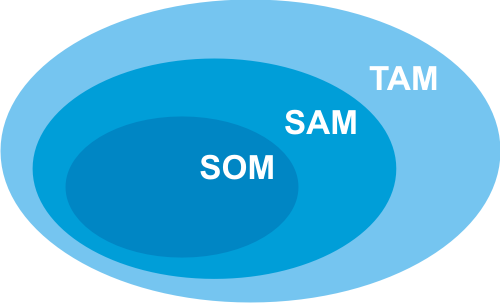Articles Description
Introduction: The Heart of Every Successful Startup
At the core of every successful startup lies a deep understanding of the problems it solves. The most innovative startups have been able to identify problems that are urgent, widespread, and important to their target audience. If your startup is solving the right problem, everything else—building a product, acquiring customers, generating revenue—becomes significantly easier. This article will guide you through the process of identifying high-impact problems that your startup can tackle, ensuring that your efforts are focused on areas with real market demand and potential for growth.
1. Why Problem Identification is Critical
The startup ecosystem is littered with companies that failed despite having great technology or an enthusiastic team. More often than not, the core reason for their failure was a fundamental misstep: they didn’t solve a real problem. According to a CB Insights study, one of the top reasons startups fail is because there was no market need for their solution.
Startups that address high-impact problems:
-
Gain traction faster.
-
Experience stronger customer loyalty.
-
See better results when pitching to investors.
A high-impact problem is one that is:
-
Widespread: Many people or businesses experience the issue.
-
Painful: It causes significant frustration or inefficiency.
-
Urgent: Solving it quickly leads to immediate value for the user.
2. Techniques for Discovering High-Impact Problems
A. Observation and Empathy Mapping
Start by observing the challenges your target audience faces in their daily lives. Pay close attention to tasks they perform frequently, what frustrates them, and where they lose time or money. Use Empathy Mapping to dig deeper into how users feel about their experiences:
-
What do they say about their challenges?
-
What do they think about the tasks they perform?
-
What do they do to navigate their issues?
-
How do they feel about their current solutions?
Empathy Mapping helps uncover emotional and behavioral drivers that aren't always obvious in standard surveys or interviews.
B. Conducting Customer Interviews
Engage with potential users directly. Use interviews to ask open-ended questions about their pain points, needs, and frustrations. Here are some questions to help you explore deeper:
-
What’s the biggest challenge you face in [specific task]?
-
How do you currently solve this problem? What frustrates you about the current solution?
-
If you could wave a magic wand and change one thing about this, what would it be?
Focus on gathering qualitative data during these interviews, looking for patterns and recurring themes. If the same problem arises repeatedly, you may be on the right track.
C. Analyzing Trends and Industry Reports
Trends often highlight emerging problems that startups can address before they become mainstream. By analyzing market trends, research reports, and industry news, you can identify areas where existing solutions are either non-existent or inadequate.
For example:
-
Are industries undergoing digital transformation that leaves certain segments underserved?
-
Are there regulatory changes that could create new challenges or inefficiencies?
-
Are there shifts in consumer behavior that are creating gaps in existing services?
Websites like CB Insights, Gartner, and Statista are great sources for finding trend reports and industry insights.
3. Prioritizing Problems: Impact vs. Feasibility
Once you've identified several potential problems, the next step is prioritizing which to tackle. Not all problems are created equal, and focusing on the wrong problem could waste valuable resources. The Impact vs. Feasibility Matrix is a simple but effective tool for prioritization.
-
Impact: How big is the problem? Does solving it deliver significant value to your target audience?
-
Feasibility: How difficult or expensive is it to solve the problem? Can your team realistically develop a solution with your current resources?
Steps for using the matrix:
-
List the problems you’ve identified.
-
Rate each problem on a scale of 1-10 for both impact and feasibility.
-
Plot the problems on a 2x2 matrix, where one axis represents Impact and the other represents Feasibility.
-
High Impact, High Feasibility: Focus on these first.
-
High Impact, Low Feasibility: Consider solving these if you can secure more resources.
-
Low Impact, High Feasibility: Only consider these if there’s no better option.
-
Low Impact, Low Feasibility: Avoid these problems.
-
4. Case Study: Airbnb’s Problem Identification
Airbnb is a prime example of a startup that identified a high-impact problem and solved it innovatively. The problem they observed was simple: people attending conferences often couldn’t find affordable lodging. Hotel rooms were expensive, and for budget-conscious travelers, this was a major pain point.
By talking to potential users (conference-goers, travelers on a budget), the founders discovered that many people would be willing to stay in someone’s spare room if it were cheaper than a hotel. They also found that hosts had extra space they were willing to rent out for a reasonable fee.
Airbnb's solution directly addressed the pain point of affordable lodging by offering an innovative, scalable platform to connect hosts and travelers. Their problem was high-impact (affordable lodging is a global issue) and feasible (building a website to connect travelers and hosts wasn’t overly expensive in the early stages).
5. Testing the Problem with Early Validation
Even if you believe you’ve identified a high-impact problem, testing it through early validation is critical. Here are a few ways to validate your problem before diving into building a solution:
-
Landing Pages: Create a simple landing page that describes the problem and your proposed solution. Drive traffic to the page and measure user interest through sign-ups or pre-orders.
-
Surveys and Polls: Use tools like Google Forms or Typeform to survey potential users. Ask them how often they experience the problem, how severe it is, and what solutions they currently use.
-
Minimum Viable Product (MVP): Build a basic version of your solution to test how users respond. This could be a demo, a prototype, or even just a service offering.
Key metrics for problem validation:
-
Number of sign-ups or pre-orders.
-
Feedback indicating frustration with existing solutions.
-
Customer willingness to pay for a solution.
6. Pivoting When Necessary
It’s important to remain flexible during the problem identification process. If early validation suggests that the problem isn’t as big or impactful as you thought, don’t be afraid to pivot. Many successful startups changed direction after realizing their initial assumptions were wrong.
For example, Slack began as a gaming company but pivoted when they identified a more pressing problem: internal team communication. They built Slack as a communication tool to solve this issue, and it turned into one of the most popular team collaboration platforms globally.
7. Key Takeaways for Identifying High-Impact Problems
-
Focus on the User: Understand their pain points, frustrations, and needs. Use empathy to get inside their mindset.
-
Use Multiple Techniques: Observation, interviews, and trend analysis provide a well-rounded view of potential problems.
-
Prioritize Impact and Feasibility: Ensure that the problem is both important to solve and within your capacity to address.
-
Validate Early: Test your problem before building a solution to ensure you’re focusing on the right issues.
-
Be Willing to Pivot: If your problem doesn't resonate with the market, don’t hesitate to adjust your focus.
Conclusion: Start with the Problem, Not the Solution
In the startup world, solving the right problem can be the difference between success and failure. By identifying and prioritizing high-impact problems, you position your startup for long-term success and market relevance. Focus on problems that are painful, widespread, and solvable within your means, and always validate your assumptions early in the process.
Next Steps:
-
Create a list of 5 potential problems your startup could solve.
-
Use customer interviews and surveys to validate these problems.
-
Prioritize the problems using the Impact vs. Feasibility Matrix.
-
Start testing your top problem with early validation methods.

 Madarek Article
Madarek Article

















